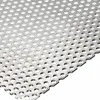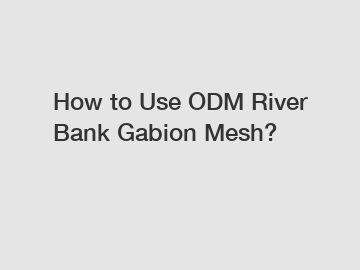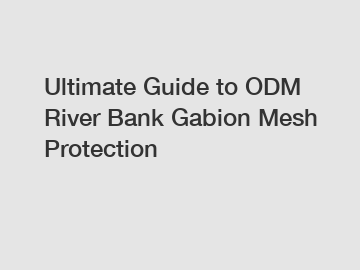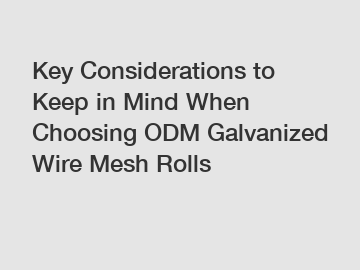What are the different types of perforated metal?
Perforated metal is a versatile material used in various industries for a wide range of applications, including filtration, screening, ventilation, decoration, and structural support. It is characterized by having holes or perforations punched, drilled, or stamped through the metal sheet. These holes can vary in size, shape, spacing, and pattern, giving rise to different types of perforated metal. Let's explore some of the most common types in detail:
Round Perforated Metal: This type of perforated metal features evenly spaced round holes punched through the metal sheet. Round perforations are the most common and versatile type, offering good airflow, visibility, and structural strength. They are used in applications such as screens, filters, guards, and decorative panels.

Square Perforated Metal: Similar to round perforated metal, square perforated metal has evenly spaced square-shaped holes punched through the material. Square perforations provide a more modern and geometric aesthetic compared to round perforations and are often used in architectural and decorative applications where a contemporary look is desired.
Slotted Perforated Metal: Slotted perforated metal features elongated or rectangular slots punched through the material instead of round or square holes. Slotted perforations offer greater flexibility in terms of airflow, visibility, and drainage. They are commonly used in applications such as sunscreens, fencing, sorting, and machinery guards.
Hexagonal Perforated Metal: Hexagonal perforated metal features hexagon-shaped holes punched through the material. Hexagonal perforations offer a unique and visually distinctive pattern compared to round or square perforations. They are often used in architectural and decorative applications where a more intricate design is desired.
Decorative Perforated Metal: Decorative perforated metal is designed with custom or intricate patterns to enhance visual appeal. These patterns can range from simple geometric shapes to complex designs inspired by nature, art, or branding elements. Decorative perforated metal is commonly used in architectural applications such as facades, partitions, signage, and interior design features.
Explore more:Are aluminum window screens good?
How much does chain link fencing cost?
Does Welded Wire Mesh Rust? What Are the Disadvantages of Welded Wire Mesh?
Wire Mesh Fence: Your Complete Guide
What is a double wire fence?
4 Tips to Select the Best Hastelloy C-22 Mesh
Sintered Dutch Weave Mesh vs. Traditional Mesh: Key Differences Unveiled
Micro Perforated Metal: Micro perforated metal features very small holes punched through the material, typically with a diameter of less than 1 millimeter. Micro perforations provide excellent filtration, acoustic, and aesthetic properties. They are commonly used in applications such as speaker grilles, acoustic panels, ventilation screens, and precision filtration.
Embossed Perforated Metal: Embossed perforated metal is produced by pressing or stamping patterns onto the surface of the material in addition to perforating it. This creates a textured or raised surface that adds visual interest, enhances grip or traction, and improves structural rigidity. Embossed perforated metal is commonly used in applications such as stair treads, flooring, decorative panels, and automotive components.
High-Strength Perforated Metal: High-strength perforated metal is made from durable materials such as stainless steel, aluminum, or galvanized steel and is designed to withstand high loads, pressures, or harsh environments. High-strength perforated metal is commonly used in industrial applications such as filtration, screening, machine guarding, and structural support where durability and strength are critical.
Expanded Metal: While not strictly perforated, expanded metal is a related material that consists of a sheet of metal that has been slit and stretched to create a pattern of diamond-shaped openings. Expanded metal offers excellent strength-to-weight ratio, ventilation, and visibility. It is commonly used in applications such as walkways, ramps, security screens, and shelving.
Each type of perforated metal offers unique advantages and characteristics, making it suitable for a wide range of applications in industries such as architecture, construction, manufacturing, automotive, aerospace, and electronics. By understanding the different types of perforated metal and their properties, designers, engineers, and architects can select the most appropriate material for their specific requirements, whether it be functional, aesthetic, or structural.
Temporary Cyclone Fencing vs. Traditional Fencing: Which Is Better?
Key Considerations When Choosing ODM Stainless Steel Kitchen Sinks
How to Choose ODM 358 Mesh Fencing?
Unlocking Security: The Benefits of ODM 358 Mesh Fencing
Top Benefits of ODM Prison Mesh Fencing
The Advantages of Choosing ODM Prison Mesh Fencing
Affordable BCR Roll Top Fencing: Your Ultimate Buying Guide










